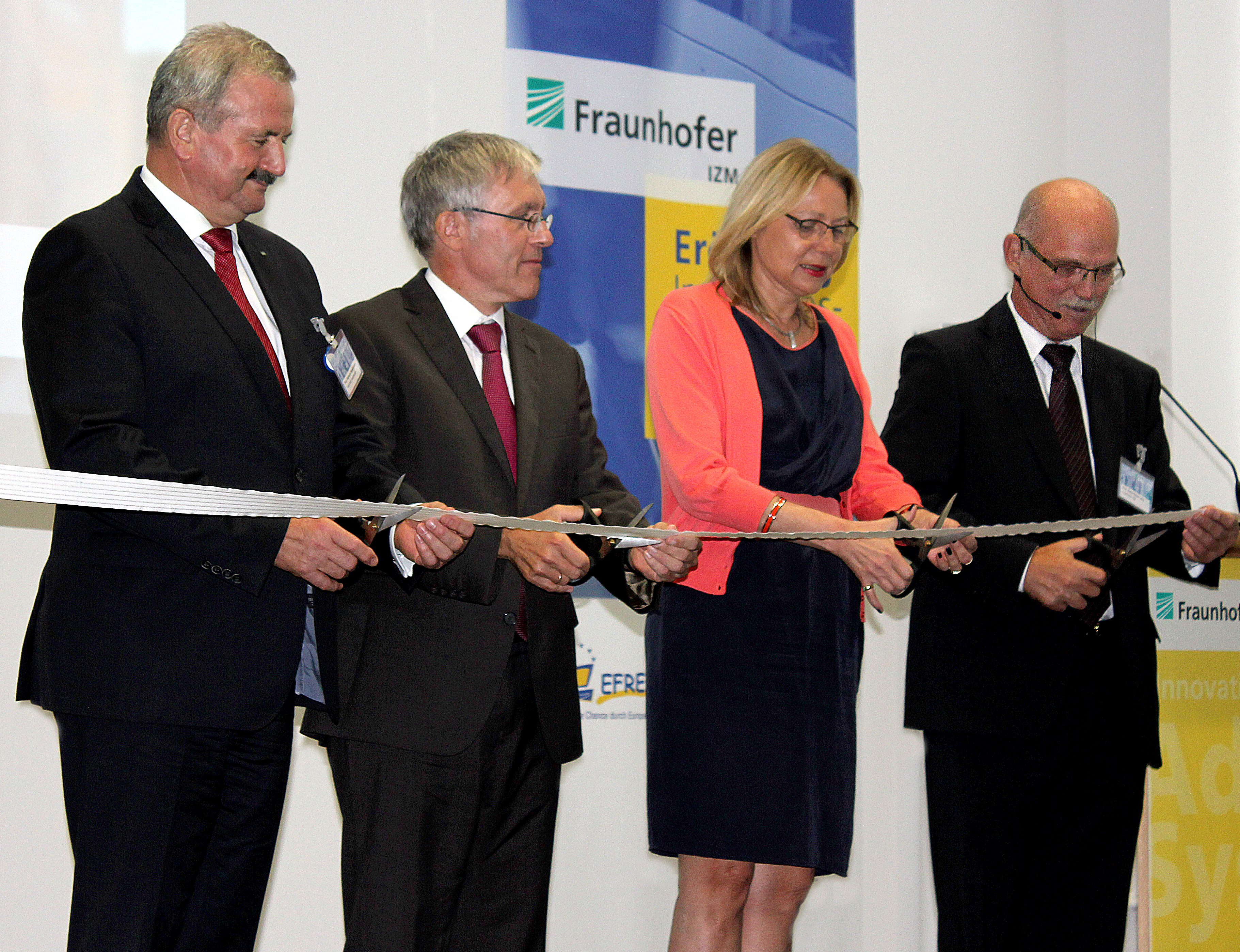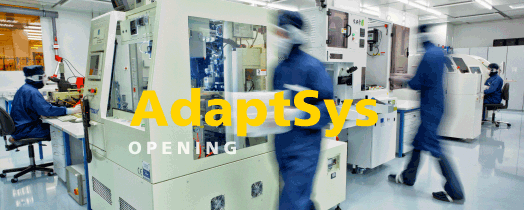AdaptSys - New Fraunhofer IZM Research and Development Center to Deliver the Microelectronics of Tomorrow

Fusing product manufacturing with microelectronic system integration - that’s the bold goal of AdaptSys, a new center at Fraunhofer IZM in Berlin. Almost 40 million euros has been allocated to the initiative by the European Union, the Land Berlin, the German Federal Ministry of Education and Research and the Fraunhofer Gesellschaft.
Together with 150 partners from science and industry the institute celebrated the opening of AdaptSys on September 1, 2015. Special guests and long-term partners were there to take a look at the new laboratories and give short welcoming speeches - Cornelia Yzer, Senator for Economics, Technology and Research, Prof. Reimund Neugebauer, President of the Fraunhofer-Gesellschaft and Dr. Stefan Mengel, head of division „Electronic Systems, Electromobility“ in the Federal Ministry of Education and Research.
AdaptSys promises to overhaul how microelectronic technology is integrated into products. Despite microelectronic technology’s central role in modern-day product functionality and the value-added chain, most products are still retrofitted after the manufacturing process has been completed. The new center will develop techniques and processes for integrating electronics and sensor technology during the manufacturing process itself in almost all types of products, including car seats, tools, kitchen aids and even fabric. This new approach to manufacturing has numerous benefits: it will improve system integration, because the product design can be optimized to accommodate or enhance the microelectronic functionality and/or assembly. Moreover, the new processes will optimize the value-added chain and promise to create new synergies between industry branches that were previously relatively unrelated Like Fraunhofer IZM as a whole, AdaptSys will prioritize the needs of industry by cooperating with local product manufacturers, who stand to benefit from the center's new process innovations The center will also provide 200 new jobs at Fraunhofer IZM Berlin alone. New approaches to innovation have been made possible by the increasing focus on the requirements of individual applications. The AdaptSys Center will reverse this process and place the focus on the user and their product. Prof. Klaus-Dieter Lang, Head of AdaptSys and Director of Fraunhofer IZM: “The new center will allow our customers, usually manufacturers and product developers, to specify which properties the electronic assemblies they require should have. Our researchers and scientists will then work with our customers and semiconductor manufacturers to develop the necessary technologies. A new spectrum of product possibilities will open up – products integrating electronics that can be ironed, that are stretchable, washable, that operate reliably at extreme temperatures, sometimes even at up to 400 °C, or that shrink to particle size. The possibilities will pave the way for new technologies and products with commercial potential so self-evident that it can already be quantified during development. Thanks to Fraunhofer IZM’s multi-pronged approach to electronic packaging, namely, basic research, technology development, and industry-oriented applied research, our scientists have an ever expanding pool of research and expertise at their disposal that not only ensures they are best placed to help Fraunhofer IZM’s industry customers meet their goals, but allows them to shape the future trajectory of entire product sectors.” AdaptSys will focus on the following industries: medical engineering, safety and security, power and energy, and sensor technology, all of which are particularly significant in Berlin. Concrete examples of potential development projects include flexible sensor bandages to accelerate wound healing and 3D solar cells that can be integrated into just about any buildspace imaginable.
Last modified:
 Fraunhofer Institute for Reliability and Microintegration IZM
Fraunhofer Institute for Reliability and Microintegration IZM